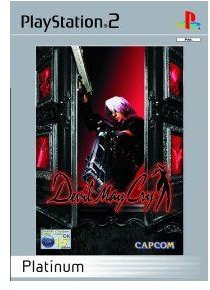This Day in Video Game History: December 7

This Day in Video Game History
1989
At a news conference, U.S. Representative Dennis Eckart (D) announced that he had recommended that the Department of Justice launch an investigation of Nintendo on charges that the company had violated anti-trust laws. The announcement came after congressional investigators discovered that several store chains and toy retailers had been prevented from stocking titles for competing video game consoles by pressure leveled by Nintendo. According to Eckart, “subcommittee staff has encountered a pervasive atmosphere of fear and intimidation among retailers” who “appear to be intimidated by the threat that Nintendo will cut off or limit their allocation [of games.]”
1990
At Universal Studios in Los Angeles, Nintendo held its PowerFest, the grand finale to its three-day nation-wide game competition.
1999
Activision released the first-person shooter Quake III Arena for Linux in North America. (ESRB: M)
2001
Activision released the real-time Star Trek: Armada II strategy game for Windows in the U.S. (ESRB: E)
Capcom released the Devil May Cry hack and slash game for the PlayStation 2 and PlayStation Portable in Europe. (PEGI: 16+)
Sony Computer Entertainment of America (SCEA) released the Jak and Daxter: The Precursor Legacy platform game for the PlayStation 2 in Europe. (PEGI: 3+)
Ubisoft released the EverQuest: Shadows of Luclin expansion pack for the massively multiplayer online role-playing game (MMORPG) EverQuest for personal computers in Europe.
2002
Capcom released the Platinum edition of the hack and slash game Devil May Cry for the PlayStation 2 in Europe. (PEGI: 15+)
2004
Agetec released the Kuon survival horror game for the PlayStation 2 in the U.S. Kuon was based on Kwaidan, Japanese horror stories drawn from Edo period folktales. (ESRB: M)
Bandai released the Battle Assault 3 featuring Gundam Seed versus fighting game for the PlayStation 2 in the U.S. (ESRB: T)
Nvidia announced that it would jointly develop a custom graphics processing unit in cooperation with Sony for Sony’s upcoming PlayStation 3 video gaming console. The announcement caused Nvidia shares to rise by fifteen percent, though the terms of the deal were not disclosed.
Paradox Interactive announced that its strategy game of Hearts of Iron 2 had gone Gold.
2005
Namco released Pac-Man World 3 for the Nintendo DS in the U.S. (ESRB: E)
Sony Computer Entertainment acquired the Amsterdam-based development studio Guerrilla Games, best known for the hit first person shooter Killzone.
2006
Nintendo released the classic platform games Donkey Kong Country, Mario Bros., Super Mario 64, and Wario’s Woods for the Virtual Console in Australia. (ESRB: KA)
Nintendo released the F-Zero racing game for the Virtual Console in Europe.

Nintendo released its Wii video game system in the South Pacific (Australia and New Zealand), Italy, and Switzerland. The console featured a 729 MHz PowerPC-based “Broadway” CPU, an ATI “Hollywood” GPU, 512 MB NAND flash memory, and a SD card memory slot. It also included a wireless Wii remote controller, a Nunchuk controller attachment, and the game title Wii Sports. Price: $399.95 in Australia, €259 in Italy, $499.90 in New Zealand, and SFr399 in Switzerland.
System 3 released Gottlieb Pinball Classics for the Wii in Australia.
Ubisoft released Star Wars: Lethal Alliance for the PlayStation Portable in the U.S. Its story was set between Star Wars Episode III: Revenge of the Sith and Star Wars Episode IV: A New Hope. (ESRB: T)
2007
Eidos Interactive released the Alvin and the Chipmunks music game, based on the 2007 film of the same name, for the Nintendo DS in Europe.
Nintendo announced that it would cut back on its advertising campaign for its Wii console in Europe, especially through the UK, in an attempt to avoid generating more demand for the console than it could meet. Despite manufacturing 1.8 million consoles per month, Nintendo remains unable to meet the increasing demand for its system. Nintendo would go on to replace its Wii ads with Nintendo DS ads.
The story of a boy who avoided a moose attack with skills learned from playing Word of Warcraft breaks across the internet. Twelve year-old Hans Jorgen Olsen and his sister attracted the attention of a moose in the wood near their home in Norway. When it charged, the boy explained to reporters, he lured it away from his sister and played possum, “just like you learn at level 30 in World of Warcraft.” The boy and his sister were uninjured, but the story spread across the internet like wildfire, place the boy at the center of a firestorm of media attention.
